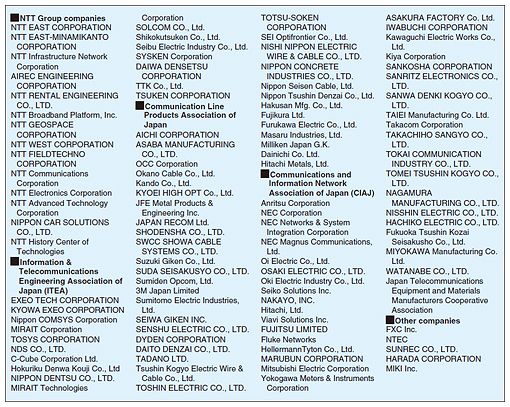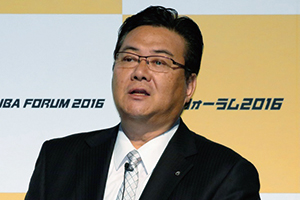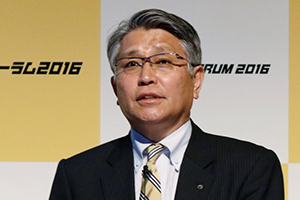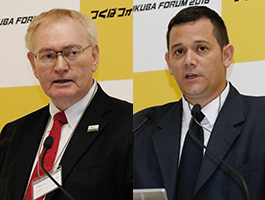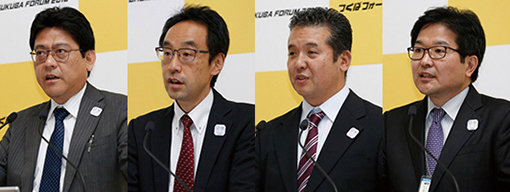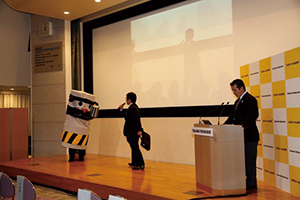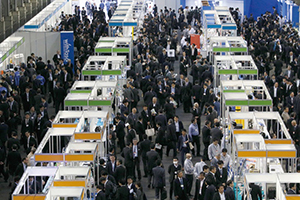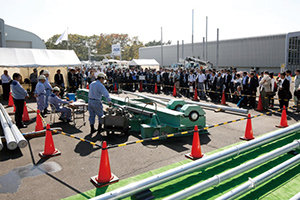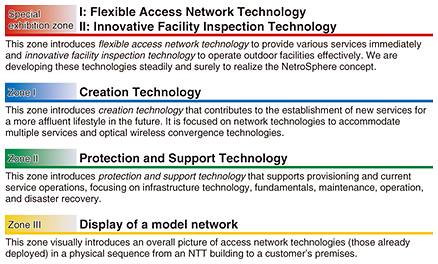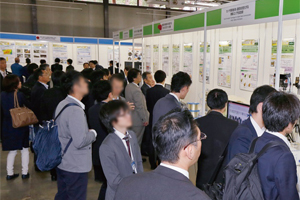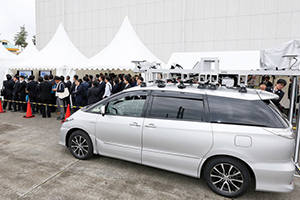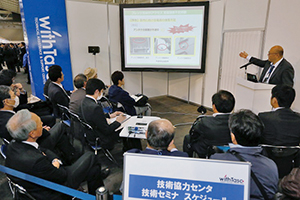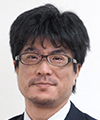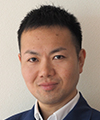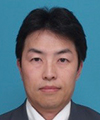 |
|||||
|
|
|||||
|
Information Vol. 15, No. 4, pp. 65–73, Apr. 2017. https://doi.org/10.53829/ntr201704in1 Event Report: Tsukuba Forum 2016AbstractTsukuba Forum 2016 was held on October 25 and 26. The theme of the forum was “Future Social Infrastructure: Co-creating a Better Life with Valued Partners ~ Innovative Access Network to Actualize the NetroSphere Concept.” This article gives a brief overview of the speeches and exhibits presented at the forum. Keywords: Tsukuba Forum, access network, NetroSphere 1. IntroductionThe focus of Tsukuba Forum 2016 was transforming the access network of the future from a connecting network into a service platform that adds value to daily life. The main forum theme was “Future Social Infrastructure: Co-creating a Better Life with Valued Partners ~ Innovative Access Network to Actualize the NetroSphere Concept.” In addition to NTT Access Network Service Systems Laboratories (AS Labs), 111 organizations (Table 1) participated and presented the latest research and development (R&D) and technology trends. The organizations included many from the NTT Group as well as member companies from the co-host organizations: the Information & Telecommunications Engineering Association of Japan, the Communication Line Products Association of Japan, and the Communications and Information Network Association of Japan.
2. Overview of speechesThe keynote speech and special speech were given at the Tsukuba International Congress Center on the first day. They were relayed from the main convention hall of the International Congress Center, which was the main venue, to a venue at the NTT Tsukuba Research and Development Center, with many audience members in attendance. 2.1 Keynote speechMr. Motoyuki Ii, Senior Executive Vice President, Senior Executive Manager of Corporate Sales Promotion Headquarters from NTT EAST, gave a keynote speech entitled “NTT EAST Group Activities Targeting Business Markets” (Photo 1).
First, he informed the audience of market trends, including that the number of subscribers to the FLET’S HIKARI optical broadband service is slowing down, that NTT EAST will shift its main target of business to the business user market rather than the consumer market, that the churn rate is low, the unit price is high, and that there is room for market expansion. He specifically discussed the idea of promoting the adaptation of information and communication technology (ICT) for small and medium enterprises, which form 99% of the business market in Japan, by combining various services utilizing an optical platform. He then stated that NTT EAST is now focusing on expanding the lineup of services for business markets, mainly to security, cloud, and support services. Moreover, NTT EAST is wholesaling optical services to various service providers as a new value creation with the Hikari Collaboration Model, and he gave examples of new services in which the services of those companies are combined with optical services. Mr. Ii also explained efforts to support the Hikari Collaboration collaborators by preparing various service menus for a charge. Next, he explained that the introduction of ICT to small and medium enterprises has been lagging behind large enterprises due to a lack of information technology talent, and he introduced an actual cloud services implementation as a case study to show how it can contribute to pursuing the asset-light business model as part of the effort to revitalize small businesses. Mr. Ii also explained how NTT EAST supports problem solving in order to address priority issues in Japan such as invigorating local economies. He then introduced in an easy-to-understand manner several examples of the introduction of ICT in various fields, including a minutes support system for local governments, a support system for disaster victims, improvements to the education environment with ICT, the science information network SINET 5, robot services for long-term care facilities in the field of medical care and nursing care, big data analysis of personal data to understand the preferences of international visitors, and smart agriculture, which uses ICT in the primary industry field. He also explained the latest network technology to support these solutions: high-speed, broadband metro access connecting all 47 prefectures in Japan in a 100G full-mesh network. This technology is capable of reducing the amount of electricity and space required by switching routes via remote control operation and switching without optical/electric conversion, and it was operational even when a 300-optical-fiber cable was cut during the Kumamoto earthquake in April 2016. In addition, the use of drones for rapid restoration in isolated areas and inspection of facilities where visual checking is difficult was introduced, and further expansion of this effort was indicated as a future plan. Finally, the case of a stadium solution in the works for 2020 was introduced. Building a Wi-Fi* environment and enhancing the stadium application will contribute not only to the inside of the stadium but also to the shopping area in the vicinity. It was an enthusiastic keynote speech that expressed an eagerness to come up with solutions in various fields. 2.2 Special speechMr. Takashi Inose, President and Chief Executive Officer (CEO) of NTT GEOSPACE CORPORATION, gave a special speech entitled “Trends in Open Innovation and the GEOSPACE 2.0 Initiative” (Photo 2).
Mr. Inose first introduced the geospace map that NTT GEOSPACE currently provides. The map initially provided just two items of content—an electronic map and aerial photographs—but more content has been launched in the five years since the map’s establishment, most recently the cloud service and satellite images distributed over the Internet. Mr. Inose described an environment that will make the map easier to use by applying an application programming interface, and he also explained the data composition and past efforts relating to the electronic map. Next, he envisioned technological innovation trends. Since the emergence of various technologies in 2010, it has been expected that a very large paradigm shift relating to development will occur after 2020, as evidenced by the advent of self-driving cars, automatic agricultural maneuvering, and the introduction of Pokémon GO. While describing the relationship between technology development and the underlying technology, Mr. Inose stated that various innovations will arise from open innovation such as cooperation with automobiles and home appliances. He stated that NTT GEOSPACE too has to self-reform to “GEOSPACE 2.0,” change its way of making maps, provide various types of content according to the requirements of various partners, and develop novel services through open innovation. Drawing on the domestic trends surrounding self-driving cars, he explained the development of three-dimensional (3D) spatial information infrastructure using NTT GEOSPACE’s two-dimensional electronic map overlaid with road and lane networks. Overseas, HERE Corp. is leading the map adjustment technology, and NTT GEOSPACE would like to consider joint developments with HERE in order to advance into Asian markets in the future. He also spoke about i-Construction, which the Ministry of Land, Infrastructure, Transport and Tourism is working on to promote construction work using ICT, and trends related to products and services for mass users. Among those trends, he mentioned that the motivation of NTT GEOSPACE related to the social issues facing Japan is to overcome such problems through technical innovation and the development of a 3D spatial information platform. Then, as an initiative of GEOSPACE 2.0, he presented the ideas of distributing content on the B2B2X (business-to-business-to-X) model in cooperation with partners to ensure that accuracy is maintained in line with market demand, securing appropriate updates, and offering a user-friendly database. Examples of GEOSPACE 2.0 efforts related to data know-how logic and data measurement processing technology and its usage scenarios were introduced, namely: 1) map/address data + lot number registration change information to support the management of communication facilities, 2) 3D spatial information + meteorological and geological information to support facility disaster-prevention planning, 3) a foreign visitor tourism service, 4) utilization of mobile mapping system (MMS) data for infrastructure management, and 5) indoor positioning and indoor/outdoor seamless navigation. He also presented three new technical development cases related to new elemental technologies, namely: 1) automatic DSM (digital surface model) generation from aerial photographs, 2) automatic change detection (small satellite imaging), and 3) automatic detection of topology from satellite/aerial photography. Finally, Mr. Inose stated that the town he had dreamed of 40 years ago will be realized if various systems underground, on land, and in the air merge with open data, artificial intelligence (AI), big data, and the cloud, and that information on the experience of the ecosystem that is being developed through open innovation could be dispatched to Asia and all over the world. This was an ardent speech that demonstrated strong feelings about attaining an ultra-smart society. 2.3 Global sessionOn the afternoon of the first day, a global session was held at the NTT Tsukuba Research and Development Center. Two lectures were given on the trends of overseas fiber to the home (FTTH) by Mr. Peter Macaulay, President of the FTTH Council Asia-Pacific (Malaysia) and by Mr. Ivan Felipe Toledo Medina, a representative of ETB (Colombia). It was a valuable opportunity to learn more about the FTTH deployment status throughout the world (Photo 3).
2.4 WorkshopsA series of workshops was held on the second day, and these included lectures given by four project managers from NTT Network Technology Laboratories and AS Labs (Photo 4).
(1) Workshop 1 Mr. Kimihide Matsumoto, Vice President, Executive Manager of the Network Architecture Innovation Project from NTT Network Technology Laboratories, gave a lecture entitled “NTT R&D Activities toward Smart and Flexible Network (the NetroSphere Concept).” First, he analyzed the direction of R&D for a future network on the basis of changes surrounding the current communication network. The future network is expected to be a smart and flexible network able to respond flexibly and economically to various demands from different business partners and to unpredictable demands such as those arising from the Internet of Things (IoT). The future network is also expected to support the Hikari Collaboration Model. Mr. Matsumoto also explained NetroSphere, NTT’s network concept for responding to the challenges of diversity and prediction difficulties. NTT laboratories’ efforts to realize the NetroSphere concept include: 1) high-speed and highly reliable server architecture (MAGONIA), 2) Multi-Service Fabric (MSF) transport network configuration technology that achieves both scalability and economy, 3) Flexible Access System Architecture (FASA) that enables modularization of network equipment, 4) advanced operation technology utilizing AI, and 5) verification of the NetroSphere concept (NetroSpherePIT). (2) Workshop 2 Mr. Akihiro Otaka, Vice President, Executive Manager of the Optical Access Systems Project from AS Labs, gave a lecture entitled “R&D Activities of FASA: Flexible Access System Architecture.” He first discussed the realization of the NetroSphere concept for the access network, which is the FASA concept announced in February 2016, and introduced a white paper published in May the same year on the FASA website [1]. FASA is a concept to achieve service provision by combining functionalized blocks and to realize an access network in the virtualization era. The cooperation between various organizations to achieve global diffusion was also addressed. In addition, the important points of this technology, which include modularization of functions, interfaces connecting the functions, the realization of functions using software, and the accommodation of functions on cloud services, were discussed. Finally, Mr. Otaka explained that AS Labs is conducting R&D on FASA focusing on a passive optical network (PON) system that accommodates a fifth-generation (5G) mobile base station as the initial target. (3) Workshop 3 Mr. Kiyoharu Sasaki, Senior Manager of the Optical Access Network Project from AS Labs, gave a lecture entitled “Research and Development of Innovative Operation Technology for Access Network Infrastructure.” First, he explained the concept of If infrastructure could speak in an easy-to-understand manner by presenting a performance involving a person wearing a telephone pole costume (known as “Mr. Paul,” Photo 5). This idea is centered on the utilization of MMS and cars to acquire point cloud data and image data. The telephone pole of the NTT-owned infrastructure is then converted into a 3D model in order to automatically detect abnormalities of the pole such as a tilt or insufficient ground clearance of the cable. He also spoke of how in the future it will be important to review operation tasks by combining various technologies such as IoT, augmented reality, image analysis, AI, and machine learning. He also briefly discussed the importance of developing the capabilities of field personnel and issued a call for NTT—as a company that provides social infrastructure services—to contribute to the maintenance of a safe and secure social infrastructure. Finally, he emphasized the need to renovate the access network with FASA and the new ground design of the optical fiber infrastructure as part of efforts to improve the operability and flexibility of access facilities while maximizing the utilization of existing facilities.
(4) Workshop 4 Mr. Masato Mizoguchi, Senior Manager of the Wireless Access Systems Project from AS Labs, gave a lecture entitled “Wireless Access Technologies to Enable a Variety of Services.” First, he explained the problem with the current wireless local area network (LAN), which is that sufficient communication quality cannot be achieved in an environment where wireless LAN devices are densely located. Then he discussed the technology that will be used to solve this problem and to further expand the wireless service—cooperative wireless LAN technology that improves throughput and stabilizes traffic to enhance the quality of user experience and that is aimed at utilizing wireless LAN for 5G mobile access. In the future, cooperative wireless LAN architecture will continue to be developed in order to manage wireless LAN from the network side and to build a wireless LAN service platform capable of providing various wireless services. The elemental technologies necessary for this realization were explained, and the schedule was clarified.
3. Overview of exhibitsExhibits from AS Labs and exhibits on the latest technologies by co-sponsored organizations and NTT Group companies were also held (Photos 6 and 7).
3.1 AS LabsThe exhibition area was divided into four zones in which a wide range of R&D results of AS Labs were exhibited (Fig. 1). Information on recommended exhibits was displayed to visitors in an easy-to-understand manner (Photo 8). The four zones consisted of a special exhibition zone (divided into two areas) as well as regular zones I, II, and III. The exhibits held in the four zones are described below.
(1) Special exhibition zone Special exhibition zone I: Flexible Access Network Technology focused on access network configuration technology for quickly responding to various services; it has been a major topic of study recently and is designed to realize the NetroSphere concept. Recommended exhibits in this zone were those on FASA, which is intended to meet the various requirements of service providers, and a PON system for the 5G mobile network. Special exhibition zone II: Innovative Facility Inspection Technology featured inspection technology to innovate outdoor facility operations. The innovative technology included aerial facility inspection technology using MMS that was demonstrated as a recommended exhibition (Photo 9).
(2) Zone I On the theme of “Creation Technology,” we exhibited technologies that will contribute to the creation of new services in the future and to the creation of a prosperous life. Network technologies and optical and wireless technologies that transmit diverse traffic were the focus in this zone. In particular, we introduced multi-core optical fiber technology that is evolving to achieve the extreme level of space utilization as a recommended exhibition. (3) Zone II The theme in this zone was “Protection and Support Technology,” and the exhibits featured current services and operations designed to achieve this. Infrastructure technology, maintenance and operation, and disaster countermeasure technologies were the focus in this zone. In particular, technology to improve network reliability by predicting pipe conduit damage from earthquakes with high accuracy and annotation technology to add know-how information on user terminal screens were introduced as recommended exhibitions. (4) Zone III An overall picture of the access network technologies was displayed as a model network from inside an NTT building to a customer’s premises in an easy-to-understand way with actual equipment. 3.2 Information & Telecommunications Engineering Association of Japan (ITEA)Exhibitors affiliated with ITEA introduced their efforts to improve quality and efficiency, and to achieve rapid equipment restoration in the event of large-scale disasters to realize a safe, secure, and reliable communications infrastructure. The exhibits featured their acquired technologies, know-how inheritance, and construction and maintenance of optical access facilities. 3.3 Communication Line Products Association of JapanExhibitors belonging to the Communication Line Products Association of Japan introduced their latest efforts, focusing on technologies and products related to outdoor equipment, including optical and metal cables and related equipment. 3.4 Communications and Information Network Association of Japan (CIAJ)Together with the Japan Industrial Association for Telecommunications Equipment and Materials (Zentsukyo), exhibitors belonging to CIAJ presented various products and solutions related to communication networks to realize a safe, secure, and prosperous society. 3.5 NTT Group companiesTo provide the best and most trusted services as a value partner, NTT Group companies displayed the latest technologies to contribute to the realization of a safe, secure, and prosperous society where people, society, and the earth are connected through communication. 3.6 EventsDemonstrations and technical seminars by exhibitors were held at the AS Labs main venue and at an outdoor venue, with many participants in attendance (Photo 10).
3.7 Free Wi-Fi trialWe collaborated with NTT Broadband Platform, Inc. to conduct a free Wi-Fi trial within the main venue of AS Labs. In the free Wi-Fi area, all of the speeches were delivered by live streaming. The speeches were also recorded on video, and when the speeches were finished, the video was distributed. At the Rest Station, a premium Wi-Fi service using cooperative wireless LAN technology was deployed. Visitors were able to experience wireless LAN technology under high-density conditions without having to worry about congestion. 4. ConclusionAlthough there was light rain on the first afternoon of the event, the second day was blessed with fine weather. About 9400 people including many customers from abroad participated in this forum; thus, Tsukuba Forum 2016 was a resounding success. Various exhibits on the latest R&D and future trends of AS Labs were received with high interest. A visitors’ questionnaire was administered after the exhibition, and the responses indicated that 98% of participants were satisfied with their experience. Overall, it was a rewarding event that offered a place to share knowledge with the participating companies, including the co-host organizations, on the transformation of the access network that supports a high quality of life brought on by the realization of the NetroSphere concept. AcknowledgmentsWe thank the Information & Telecommunications Engineering Association of Japan, the Communication Line Products Association of Japan, and the Communications and Information Network Association of Japan for their support of Tsukuba Forum 2016. Reference
|
|||||

